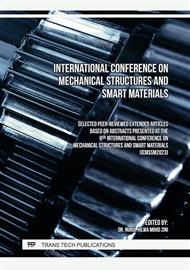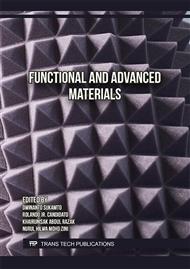[1]
Z. Xu, D. Qiu, P. Yi, L. Peng, X. Lai, Towards mass applications: A review on the challenges and developments in metallic bipolar plates for PEMFC, Prog. Nat. Sci-Mater. 30(6) (2020) 815-824.
DOI: 10.1016/j.pnsc.2020.10.015
Google Scholar
[2]
Z. Xu, Z. Li, R. Zhang, T. Jiang, L. Peng, Fabrication of micro channels for titanium PEMFC bipolar plates by multistage forming process, Int. J. Hydrogen Energy. 46(19) (2021) 11092-11103.
DOI: 10.1016/j.ijhydene.2020.07.230
Google Scholar
[3]
D. Zhang, L. Peng, X. Li, P. Yi, X. Lai, Controlling the Nucleation and Growth Orientation of Nanocrystalline Carbon Films during Plasma-Assisted Deposition: A Reactive Molecular Dynamics/Monte Carlo Study, J. Am. Chem. Soc. 142(5) (2020) 2617-2627.
DOI: 10.1021/jacs.9b12845
Google Scholar
[4]
F. Yu, K. Wang, L. Cui, S. Wang, M. Hou, F. Xiong, R. Zou, P. Gao, H. Peng, Z. Liu, Vertical-Graphene-Reinforced Titanium Alloy Bipolar Plates in Fuel Cells, Adv. Mater. 34(21) (2022) 2110565.
DOI: 10.1002/adma.202110565
Google Scholar
[5]
K. Takahashi, K. Mori, H. Takebe, Application of titanium and its alloys for automobile parts, MATEC web of conferences, EDP Sciences, 321 (2020) 02003.
DOI: 10.1051/matecconf/202032102003
Google Scholar
[6]
N. Aukland, A. Boudina, D.S. Eddy, J.V. Mantese, M.P. Thompson, S.S. Wang, Alloys that form conductive and passivating oxides for proton exchange membrane fuel cell bipolar plates, J. Mater. Res. 19(6) (2004) 1723-1729.
DOI: 10.1557/jmr.2004.0216
Google Scholar
[7]
M.-C. Wu, S.-H. Chan, K.-M. Lee, S.-H. Chen, M.-H. Jao, Y.-F. Chen, W.-F. Su, Enhancing the efficiency of perovskite solar cells using mesoscopic zinc-doped TiO 2 as the electron extraction layer through band alignment, J. Mater. Chem. A. 6(35) (2018) 16920-16931.
DOI: 10.1039/c8ta05291c
Google Scholar
[8]
H. Sun, Z.-t. Xu, D. Zhang, First-principles calculations to investigate doping effects on electrical conductivity and interfacial contact resistance of TiO2, Appl. Surf. Sci. 614 (2023) 156202.
DOI: 10.1016/j.apsusc.2022.156202
Google Scholar
[9]
G. Kresse, J. Furthmüller, Efficient iterative schemes for ab initio total-energy calculations using a plane-wave basis set, Phys. Rev. B. 54(16) (1996) 11169-11186.
DOI: 10.1103/physrevb.54.11169
Google Scholar
[10]
G.K.H. Madsen, J. Carrete, M.J. Verstraete, BoltzTraP2, a program for interpolating band structures and calculating semi-classical transport coefficients, Comput. Phys. Commun. 231 (2018) 140-145.
DOI: 10.1016/j.cpc.2018.05.010
Google Scholar



